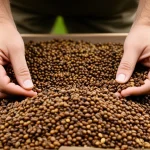Choosing the Perfect Horse Bedding for Sensitive Skin: Expert Tips and Guide
When it comes to the care and comfort of your horse, the bedding in their stable is a crucial aspect that cannot be overlooked. For horses with sensitive skin or respiratory issues, selecting the right bedding is more than just a matter of convenience; it’s a matter of health and well-being. Here’s a comprehensive guide to help you choose the best horse bedding for your equine friend.
Understanding Your Horse’s Needs
Before diving into the various types of bedding, it’s essential to understand your horse’s specific needs. Horses with sensitive skin or respiratory problems require bedding that is dust-free, highly absorbent, and free from allergens.
In parallel : Illuminating Your Corn Snake Habitat: The Definitive Guide to Essential Lighting Techniques
“As a BHS level 4 senior yard manager and senior lecturer in equine science, I always stress the importance of considering your horse’s needs above all else when choosing bedding,” says Sue Hurford. “For example, if a horse has respiratory or allergy problems, choose a totally dust-free bedding with high absorbency levels, such as paper or dust-extracted shavings.”[1]
Types of Horse Bedding
There are several types of horse bedding available, each with its own set of advantages and disadvantages.
Also read : Tailored Exercise Plans for Pomeranians with Luxating Patella: Boost Your Pup’s Health and Mobility
Wheat Straw and Oat Straw
Wheat straw and oat straw are traditional and readily available bedding options. However, they are not ideal for horses with respiratory issues due to their dust content.
- Wheat Straw: Affordable, absorbent, warm, and easy to muck out. However, it contains dust and spores, making it unsuitable for horses with respiratory problems or allergies[1].
- Oat Straw: Less absorbent than wheat straw and often eaten by horses, which can lead to digestive issues. It is also dusty and not recommended for horses with respiratory issues[1].
Wood Shavings
Wood shavings are a popular choice due to their absorbency and ease of use.
- Benefits: Highly absorbent, easy to use, and can be burnt. Most brands are now dust-extracted, making them a better option for horses with respiratory issues[1].
- Drawbacks: More expensive than straw, takes a long time to rot down, and requires regular replenishment[1].
Paper and Cardboard Bedding
Paper and cardboard bedding offer an alternative to traditional materials but come with their own set of challenges.
- Benefits: Cheaper than shavings, provides insulation and storage qualities similar to straw or shavings. However, it requires more cleaning and maintenance[1].
- Drawbacks: Not suitable for deep litter beds due to low absorbency, can be messy, and the ink from the print can be problematic during grooming[1].
Wood Pellets
Wood pellets are highly absorbent and suitable for horses with specific needs.
- Benefits: Can absorb nine times more liquid than regular shavings, ideal for deep-litter beds, and cost-effective in the long run. They also provide consistent footing and are less likely to be eaten by horses[1][2].
- Drawbacks: Need to be wetted before use, can be slippery when dry, and require some effort to lay down[1].
Hemp Bedding
Hemp bedding is another option that offers several advantages.
- Benefits: Dust-free, highly absorbent, and breaks down quickly. It is ideal for horses with respiratory problems and is economical in the long run[1].
- Drawbacks: Initially expensive, can be slippery when first laid down, and tends to stick to rugs, manes, and tails[1].
Miscanthus Bedding
Miscanthus bedding is a more absorbent alternative to straw.
- Benefits: More absorbent than straw, biodegradable, and more hygienic. It reduces waste and the need for frequent topping up[1].
- Drawbacks: Some horses may eat it, which can be a problem[1].
Bedding for Horses with Respiratory Issues
For horses with respiratory issues or allergies, the choice of bedding is critical.
Key Considerations
- Dust-Free Bedding: Opt for beddings that contain the lowest possible levels of dust and spores. Natural products without additives are best[1].
- Avoid Sweeping: Avoid sweeping the yard while your horse is in their stable to prevent them from inhaling dust particles[1].
- Hay Management: Hay is full of airborne dust and spores; consider steaming or soaking it to reduce these irritants[1].
Recommended Bedding
- Wood Pellets: Wood pellets, such as Silva Crumb, are highly recommended due to their dust-free nature and high absorbency. They are made from kiln-dried pine, which has natural antiseptic properties and reduces ammonia odor[2].
- Hemp Bedding: Hemp is another good option as it is dust-free and highly absorbent, making it ideal for horses with respiratory problems[1].
Bedding for Wet Horses
Horses that are very wet or tend to bury their droppings in the bedding require special consideration.
Wood Fibre Bedding
- Benefits: Wood fibre bedding allows urine to drain through the fibres, keeping the top layer dry. It creates a firm bed that makes it easier to skip out droppings and reduces the need for frequent mucking out[1].
- Practical Advice: “Urine will drain through the wood fibres straight to the bottom of the bed, keeping the top layer of the bed dry,” explains Clare Pearson from Easibed. “This creates a big, deep, and cosy bed that saves time and money”[1].
Practical Tips for Choosing the Best Bedding
Here are some practical tips to help you make the best choice for your horse:
Assess Your Horse’s Specific Needs
- Consider your horse’s health conditions, such as respiratory issues or allergies.
- Think about your horse’s behavior, such as whether they tend to eat their bedding or bury their droppings.
Evaluate the Bedding Material
- Look for beddings that are highly absorbent and dust-free.
- Consider the ease of use and maintenance of the bedding.
Consult with Experts
- Talk to equine professionals, such as veterinarians or stable managers, for recommendations based on your horse’s specific needs.
Detailed Comparison of Bedding Types
Here is a detailed comparison of various bedding types to help you make an informed decision:
| Bedding Type | Absorbency | Dust Content | Ease of Use | Cost | Suitable For |
|---|---|---|---|---|---|
| Wheat Straw | Medium | High | Easy | Low | General use, not for horses with respiratory issues |
| Oat Straw | Low | High | Easy | Low | General use, not for horses with respiratory issues |
| Wood Shavings | High | Low (dust-extracted) | Easy | Medium | Horses with respiratory issues, general use |
| Paper Bedding | Low | Low | Difficult | Low | Not for deep litter beds, general use |
| Wood Pellets | Very High | Low | Moderate | Medium | Horses with respiratory issues, wet horses |
| Hemp Bedding | High | Low | Moderate | High | Horses with respiratory issues, wet horses |
| Miscanthus Bedding | High | Low | Easy | Medium | General use, not for horses that eat bedding |
Real-Life Examples and Testimonials
Here are some real-life examples and testimonials from horse owners who have found success with specific bedding types:
Wood Pellets
“I’ve tried most types of bedding and decided to try Silva Crumb. I have a clean, old horse and a messy young one, who box walks and poos in the same place most days. The pellets are easily dissolved with water, and I only have to put in one bag every five days,” says Claire Williams, a satisfied user of Silva Crumb[2].
Wood Shavings
“We have rubber matting in the stables at Carl’s yard. We clean the mats every two weeks, pulling them out, hosing them, and using a disinfectant powder. I like big, thick shavings beds that encourage horses to lie down,” explains Alan Davies, former groom to Carl Hester[1].
Choosing the right horse bedding is a critical decision that can significantly impact your horse’s health and comfort. By understanding your horse’s specific needs, evaluating different bedding materials, and considering practical tips and expert advice, you can make an informed decision that ensures your horse has the best possible environment.
Remember, the key is to prioritize your horse’s health and comfort. Whether you opt for wood pellets, hemp bedding, or another type, make sure it is dust-free, highly absorbent, and suitable for your horse’s specific needs. With the right bedding, you can help prevent health issues such as respiratory problems and mud fever, ensuring your horse remains happy and healthy.










